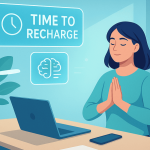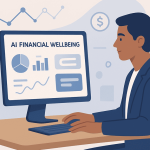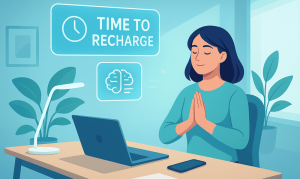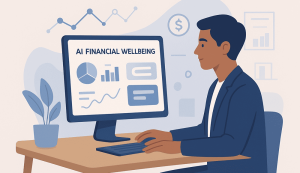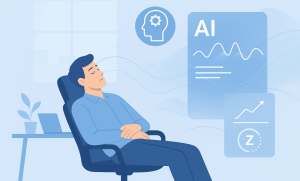In today’s fast-paced business environment, creative teams are under mounting pressure to produce fresh ideas, innovate at speed, and continuously stay ahead of market demands. But without built-in opportunities for recovery, innovation fatigue sets in. This is where AI creativity break wellness becomes more than a buzz-phrase—it becomes a strategic necessity to sustain performance, wellbeing and long-term creativity.
Why creative burnout recovery matters for your team
Creative professionals are at greater risk of burnout than many other groups. One study found that 83% of marketing and communications professionals reported burnout, while 56% were actively concerned about burnout in their roles.
Another survey reported that 44% of workers in creative roles felt overwhelmed due to constant performance demands.
In practical terms: when your team’s mental energy is drained, their ability to generate novel ideas or solve complex problems drops significantly. As one article put it, “stress and anxiety stall creativity and innovation.
So if you care about innovation wellness and maintaining a productivity balance—not just throughput—you must address recovery and replenishment of creative energy.
What does an “AI-driven creativity break wellness” strategy look like?
Here’s how you might structure a programme that uses smart wellness nudges to keep your creative team resilient:
- Micro-break prompts (two- to five-minute digital nudges) that encourage short rest, movement or mental shift.
- AI mindfulness prompts that detect signs of fatigue (via behaviour, calendar load, sentiment tools) and suggest purposeful reset activities.
- Analytics via AI wellbeing dashboards to track team rest metrics, cognitive load, creative output trends and correlate them with performance outcomes.
- A rhythm of scheduled creativity breaks: e.g., two “no-meeting” windows per day or week to allow for recovery and incubation of ideas.
With this strategy you’re not simply telling people to take breaks—you’re building a system that supports recovery of creative capacity in a data-driven way.
How smart nudges restore creative energy
Why do these short wellness breaks make a difference? Because they interrupt depletion, allow for micro-recovery, and shift the context in which ideas form. Here are three mechanisms:
- Interrupt cognitive fatigue: Extended creative work depletes attentional resources and diminishes the brain’s ability to see connections.
- Shift context for idea incubation: Even brief breaks give subconscious mind space to recombine existing material—boosting divergent thinking.
- Signal permission to rest: Teams often feel guilty taking breaks. A digital nudge normalises micro-rest and helps maintain a healthy flow state rather than pushing into exhaustion.
By embedding AI-driven flow state support into your team’s workflow, you maintain the innovation engine without burning it out.
Evidence and business-value
Here are some data points you can share with stakeholders:
- Research shows workers with better mental-well-being needed ~23% less effort to do creative work than those struggling. BetterUp
- A study on creative time pressure found that high pressure increases the likelihood of “knowledge hiding” and reduces team innovation.
- Creative-industry professionals self-reported low motivation, irritability and anxiety when they lacked work-life balance.
From a business perspective: fewer burnout days, higher idea output, better team morale and retention—all of which contribute to productivity balance and innovation wellness.
Step-by-step: Implementing smart wellness nudges with AI
Here’s a suggested implementation roadmap:
Step 1: Baseline & detection
- Use calendar analytics, sentiment surveys or workload tracking to identify “at risk” creative periods (e.g., 10+ straight hours of ideation, high revision counts).
- Tag creative-intensive roles, projects or teams.
- Set key metrics: number of micro-breaks taken, creative output volume, subjective recovery rating.
Step 2: Design micro-break prompts
- Define prompt triggers (e.g., after 90 minutes of continuous work, after 3 drafts submitted, high emotional-tone flagged).
- Create short wellness tasks: 2-minute breathing/mindfulness, 5-minute walk, “sketch something unrelated”, “swap your screen view”.
- Leverage AI meditation tools that generate personalised break content (audio/visual cues) tailored to the individual’s current state.
Step 3: Integrate the workflow
- Deliver prompts via chat-bots, calendar overlays, mobile push notifications or workstation pop-ups.
- Encourage team leads to model the behaviour (taking prompts, shutting off).
- Provide space for optional “disconnect” in real world: quiet room, outdoor bench, unscheduled time.
Step 4: Dashboard and feedback loop
- Via AI wellbeing dashboards, track the correlation between prompt adoption, break uptake and creative output quality.
- Collect qualitative feedback: Do team members feel more recharged? Are fewer ideas getting shelved due to fatigue?
- Share aggregated data with leadership to justify scaling the programme.
Step 5: Review and iterate
- Every quarter, review: prompt effectiveness, timing, content.
- Adjust: maybe fewer but longer breaks, or dynamic timing depending on team load.
- Recognise and reward teams that adopt the system, reinforcing behaviour.
Addressing potential objections
“We don’t have time for breaks.”
Yes you do—because if you skip recovery, your idea-engine slows. A 5-minute prompt every 90-120 minutes saves cognitive energy later.
“Our creatives aren’t broken, why change?”
Creative output may look ok now, but hidden costs (revisions, reduced novelty, attrition) accumulate. An intentional approach to wellness prevents decline.
“AI sounds too heavy/expensive.”
You don’t need a massive roll-out. Many SaaS tools now offer prompt-engines, schedule nudges or dashboards at modest cost. The ROI can be high if it avoids one major creative-team failure or churn.
Key benefits for business owners
- Sustained creative capacity across teams rather than peaks and troughs.
- Improved retention of creative talent (reducing costs of replacement).
- More consistent innovation output, contributing to competitive edge.
- Ability to quantify wellness as a performance lever, not just a “nice to have”.
Final thoughts
If you’re serious about innovation wellness and seeking productivity balance in creative operations, implementing an AI creativity break wellness strategy can be a game-changer. By blending micro-break prompts, intelligent detection and actionable dashboards, you can protect your most valuable asset your team’s creative energy.
In short: build recovery into the rhythm of work rather than treating it as an after-thought. When you do, your team will not just deliver more—they’ll deliver more sustainably. And when your creative engine is healthy, innovation becomes less about sprinting and more about enduring momentum.


